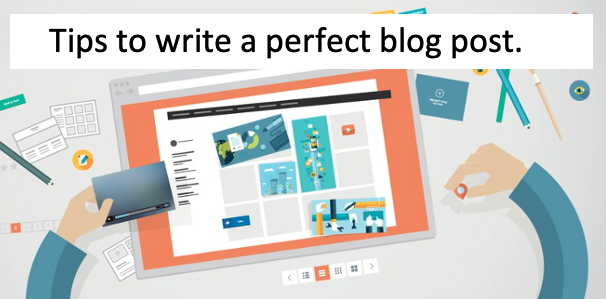10 steps to Inbound paid media success.
Inbound paid media makes your ads both relevant and timely.It does not require a long time optimization of your website content to reach the first page of Google results.
Whether you are launching a product, promoting an event or increasing brand awareness, paid social media campaigns are a valuable component.
When you use the right inbound paid media marketing strategy, you can land ideal customers right at your doorstep.
The premise behind paid media marketing is simple; you just attract would-be customers to your website with valuable information.
They can then learn about your company and your offers when they have already become customers. You don’t have to run TV ads, radio spots, or billboard ads.
If you put in the right content, it will attract traffic ranking high in search engine results for terms and keywords related to your business.
But the execution can be intricate and involved. You need to understand that a high rank for an important search term is what everyone in the online business industry is yearning for and so the competition is cutthroat.
Implementing a strategic approach to your content marketing is the surest way to know if your efforts can deliver the results.
A combination of paid media, earned media and owned media makes you get the maximum exposure for inbound marketing.
Without a clear structure, paid inbound marketing can just feel like another vague set of principles that don’t have a bearing.
What you need to know and make sure of is if your paid media framework is uniting your marketing and sales efforts. Remember, a marketing strategy is important; but if it’s not aligned with your sales strategy and with your business goals, it will not deliver results.
The steps are as follows:
1.Set the budget.
Getting the budget paid ads is tricky. You have to know what exactly is in store for you.You need to know who your target audience is and know how you can get to the target audience.You should make sure that you spend within the expectations of the organization.
2.Use paid media to drive inbound efforts.
You should use videos as a top of the funnel channel and try to be the first touch of the brand paid social new acts both as a promoter and a closer. Thereafter, you can invest in paid searches and all SEO efforts.
3.Use Google analytics to gain insights.
You can set the Google ads campaigns to use the decay model.Google Analytics can offer a more holistic view of how users interact with your content and the rate of conversion
4.Establish your goals.
It can’t be possible to evaluate your success if you don’t know what the success you are aiming at looks like. You, therefore, need to establish your goals and make sure you understand what you are trying to accomplish.
You can ask yourself some leading questions. Do you need to create brand awareness? Are you interested in more qualified links? Is it increased revenue that is your target?
Although paid media marketing can be employed across your customers’ buying experience, you need a great deal of content to make it happen.
If, for instance, you are a small team or you are just starting, you need to focus on a few high-priority goals that are achievable rather than setting your eyes on many goals at once.
You should work with company leadership and determine the most important goals your paid media marketing is hoping to achieve.
You can base your evaluation on your current circumstances and establish where you would love to be in a set period, like 12 months or 4 months.
You can then start putting in place plans and tactics that can move you towards the goal. You ought to understand that it’s hard to find several battles at the same time. With this in mind, just focus on a few goals.
If your goal is traffic and brand awareness, put your focus there. Just avoid focusing on statistics that don’t relate to what you are currently pursuing.
You should know that there’s nothing wrong with adjusting your goals. So you can set both long-term and short-term goals and keep in mind that you can amend them as time progresses.
You only need to make sure that you have set your goals and now focus on achieving them.
5.Learn about your audience.
You need to know what the potential customers are searching for. You have to invest in keyword research which makes you identify which hot search words are in your industry.
It also makes you understand how competitive the search landscape is. You can use this to know how the competition is and what efforts you need to put in. Google search console and Semrush are ideal tools for this.
The Internet generates enough data that these platforms help to organize. You can use a seo tools to do keyword research. For example with Semrush seo tool, the free version limits the number of searches but there is a paid plan with a free trial that can come in handy.
Try to avoid focusing on the wrong things. For example, website traffic is great but it can be a variety metrics. You could produce content that ranks high and drives a lot of traffic but if the site’s visitors don’t have an intention to purchase, the traffic isn’t impacting positively.
You should focus on your sales team. This is perhaps the best resource for learning about your customers. These are the people that speak to customers daily.
They know what the buyers are asking for and what their true concern is. This makes you understand what ultimately makes the customers purchase. You need to schedule a time to brainstorm content topics with your sales team.
6.Build your team.
Paid media marketing is about writing and video production. So you need to have someone to do the writing and video production for you.
The options here are three. All of them have their advantages and disadvantages. Hiring an internal team is good because it’s more efficient, cheaper, and produces high-quality work. But it has setbacks too.
You can opt to hire an agency too. This makes it quick to start and they also have a good level of expertise. But the drawback is that they are expensive and can be inefficient. You can get very few articles from them. They can also produce stuff that doesn’t resonate with your customers.
You can hire a freelancer. These are inexpensive and have a level of expertise. But they can’t be relied upon because most of them do the writing as a side hustle.
It makes it difficult for you to get a response during their working hours which can be inconvenient to your business.
The other option is to hire an internal content team. This gives you full-time access which translates to more content, quicker turnabouts, and generally a good relationship between the content producers and the team.
But you have to look out for the best candidates before settling on your content writers.
Figuring out who is going to write your content is pivotal to your business and it’s an issue that should be addressed beforehand.
The content that is produced is what determines how you compete in the market. You just need to choose one of the three options based on how you want it done.
Although it’s tempting to value options that represent a quicker star, you should also put in mind that hiring an agency, for example, will limit your output and cost you much more in the long run.
This is a business initiative that needs to be planned accordingly. Just understand that when hiring a writer, you don’t need to look for industry experience. There are times when an outsider’s perspective could come in handy for your content. Sometimes your industry insider can get engaged in so much jargon and specifics that end up not fitting the buyer.
7.Develop content strategy.
Now you have your tool, your research, and your team. You now need a plan to set it off. Content writing has a lot involved.
It is keyword research, brainstorming meetings, building reports, evaluating and updating older content, and many other minor issues. You need to build processes and create a clear meeting strategy that makes the whole process successful.
You need to develop a clear process that can track each piece of content from its inception to its publication, and even beyond. You must determine who is responsible for every step.
If, for instance, you have hired a content writer, they should be able to handle almost all the aspects of content writing but you should also not be ignorant and overlook the editing part.
You should not make the writer overwhelmed. Let the writer focus on his primary duty of content creation. If you get them overburdened with other activities, the production is bound to suffer. You can make social media management, email campaigns, and copywriting a job on your own.
Focus on figuring out a realistic publication schedule. You should make sure you commit to several publications that you can manage.
You don’t, for instance, commit to three articles per week if you know that you can’t deliver that. You should make sure you have content in various stages of the creation process. A backlog of ideas, outlines, drafts, and finalized project work keeps the whole thing moving.
8.Get to work.
Inbound paid media can be a lot of work. Building a library of valuable content for your audience takes time. If, for instance, you publish two or three articles per week, if you keep up with the pace you get around 100 articles per year.
You just need to review SEO best practices that ensure your content is most likely to be found on search engines. You ought to make checklists that show you that you are not missing out.
You should also try as much as possible to avoid bottlenecks. Bottlenecks are content killers.
Try and avoid making it a practice for multiple company leaders to sign off on every piece of content that gets published.
Yes, you need to have a great editor and a solid foundation of the QA process, but making it a habit to give all the company leaders the content to sign will make it languish on the virtual desks of busy company leaders who might not have the time to double-check three articles every week.
You should just build a content calendar that ensures regular publication. You develop a backlog of content needs and sort them by priority.
9. Evaluate, measure, adjust.
To evaluate your paid media marketing, you can use Hubspot. This software has packages that range from free to enterprise level. They offer options for every budget. It offers customer reporting options that provide an intense insight into blogs’ performance.
This ranges from traffic analysis to revenue attrition. But you should know that evaluating the effect of a single piece of content is not an easy task. The customer journey is rarely linear and simple. So don’t get hung up on small fluctuations.
These fluctuations are part of business transactions so you should learn not to focus on them. That prevents you from pressing the panic button for no apparent reason.
As you start to build a library of content, you also have to devote some of your time to updating and optimizing older content so it keeps performing well. Updating your older content is just as important as keeping track of your current progress.
10.Branch out and start new things.
After you have got all the basics down and a good head of steam, you should now look at the other ways you can use Inbound paid media to bolster your organization’s sales. Some of the prudent steps that you can involve are highlighted below:
*Starting a newsletter to share new content with your audience. This makes them get a gist of what’s happening in your organization.
*Building a social media strategy to connect with your customers and fans.
*Creating email sequences that trigger when a prospect completes certain actions.
*Expanding your video strategy to drive YouTube engagement.
*Providing a buyer’s guide to help answer the prospects’ questions before purchase.
*Creating post-sale content to keep your customers happy and engaged.
Just like anything else related to inbound marketing, you need to think creatively and the focus should always be on the welfare and needs of your customers.
You should also focus on the strengths of your team because for the delivery to be effective, the output of your team matters a lot. You should be preoccupied with what will make you find a prospect and help the prospect to become your customer.
SUMMARY.
Inbound paid media strategy could be executed with a team of dozens. Content creation, videography, strategy, and more can be carried out by a team. It can also be done by a single entrepreneur who opts to go it alone.
Either way, the process follows a similar pattern; know what you are trying to do, find the right people to do it, and get going.
Building momentum is a crucial aspect of any business. That way, you have something to measure in terms of achievements. When you get going, things start working for you







